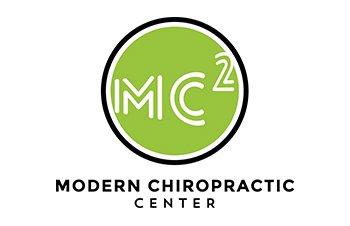When Scoliosis and Arthritis Collide in Adults
Understanding the Complex Relationship Between Scoliosis and Arthritis in Adults
Scoliosis and arthritis are two distinct musculoskeletal conditions that can significantly impact an individual’s quality of life. While they may seem unrelated at first glance, there exists an intricate interplay between these two conditions, particularly in adults. Understanding the relationship between scoliosis and arthritis is crucial for effective management and improved outcomes for those affected.

The Dual Challenge of Scoliosis and Arthritis in Adults
Scoliosis, characterized by an abnormal lateral curvature of the spine, can develop during childhood or adolescence. However, it can also manifest or progress in adulthood due to various factors such as degenerative changes in the spine, spinal trauma, or even as a consequence of untreated childhood scoliosis. On the other hand, arthritis refers to inflammation of the joints, which can lead to pain, stiffness, and reduced mobility. Osteoarthritis, the most common form of arthritis, involves the gradual breakdown of cartilage and bone within the joints.
In adults with scoliosis, arthritis often becomes a coexisting concern. The abnormal curvature of the spine places uneven pressure on the vertebral joints, accelerating wear and tear over time. This increased mechanical stress contributes to the development and progression of arthritis in the affected spinal segments. Conversely, arthritis can exacerbate scoliosis symptoms by causing further stiffness and restriction of movement in the spine.
Navigating Treatment Complexities for Scoliosis and Arthritis
One of the key challenges in managing scoliosis and arthritis concurrently lies in the complexity of their treatment approaches. While there is no cure for either condition, various interventions can help alleviate symptoms and improve function. Physical therapy, targeted exercise programs, and pain management techniques play essential roles in maintaining mobility and minimizing discomfort. Additionally, assistive devices such as braces or orthotics may offer support and stability, particularly for individuals with severe scoliosis or arthritis-related joint deformities.
In some cases, surgical intervention may be necessary to address both scoliosis and advanced arthritis. Spinal fusion surgery, commonly used to correct severe spinal curvature in scoliosis, can also stabilize arthritic spinal segments and alleviate pain. However, surgery is typically considered a last resort when conservative measures fail to provide adequate relief or when there is a risk of neurological complications.
Beyond conventional treatments, holistic approaches to managing scoliosis and arthritis focus on overall health and well-being. Maintaining a healthy weight, adopting good posture habits, and engaging in low-impact exercises such as swimming or yoga can help preserve spinal function and reduce arthritis-related symptoms. Furthermore, dietary modifications, including anti-inflammatory foods and supplements, may help mitigate inflammation and support joint health.
Navigating the intersection of scoliosis and arthritis requires a multidisciplinary approach involving orthopedic specialists, physical therapists, pain management experts, and other healthcare professionals. Individualized treatment plans should take into account the unique characteristics and needs of each patient, considering factors such as age, severity of symptoms, and overall health status.
Empowering Your Journey Through Scoliosis and Arthritis Care
In conclusion, the coexistence of scoliosis and arthritis presents complex challenges for adults seeking to manage their musculoskeletal health. By understanding the relationship between these two conditions and exploring comprehensive treatment strategies, individuals can take proactive steps towards improving their quality of life and preserving spinal function. With the right support and guidance, it is possible to navigate the journey of scoliosis and arthritis with resilience and optimism.
If you’re experiencing symptoms of scoliosis, arthritis, or both, don’t hesitate to reach out for professional help. At our center, we’re committed to providing you with the best care tailored to your unique needs. You can easily schedule an appointment with us online at your convenience or give us a call today. Our friendly staff is ready to assist you with setting up a consultation so that you can begin your journey towards improved health and well-being. Take the first step towards managing your symptoms effectively by scheduling now.
Frequently Asked Questions (FAQs) About Scoliosis and Arthritis in Adults
What is scoliosis, and how does it differ from arthritis?
Scoliosis is a condition characterized by an abnormal lateral curvature of the spine. It can appear in childhood or adulthood due to various factors, including degenerative changes. Arthritis, on the other hand, involves inflammation of the joints, causing pain, stiffness, and reduced mobility. While scoliosis affects the spine’s structure, arthritis primarily impacts the joints.
How are scoliosis and arthritis related in adults?
In adults, the irregular spinal curvature from scoliosis can place uneven pressure on the vertebral joints, leading to accelerated wear and tear—a key factor in the development of arthritis, particularly osteoarthritis. Conversely, arthritis in the spine can exacerbate the symptoms of scoliosis by increasing stiffness and restricting movement.
Can scoliosis and arthritis be cured?
There is no cure for either scoliosis or arthritis, but various treatments can manage symptoms and improve quality of life. These include physical therapy, exercise programs, pain management techniques, and sometimes surgical interventions for more severe cases.
What types of treatments are effective for managing these conditions?
Effective treatments for scoliosis and arthritis include targeted exercise programs to maintain mobility, physical therapy to manage pain and improve function, and assistive devices like braces or orthotics for stability. In severe cases, surgical options like spinal fusion might be considered to correct spinal curvature and stabilize arthritic joints.
Are there holistic approaches to managing scoliosis and arthritis?
Holistic approaches that focus on overall health are beneficial. Maintaining a healthy weight, practicing good posture, and participating in low-impact exercises such as swimming or yoga can help preserve spinal function and alleviate arthritis symptoms. Anti-inflammatory diets and nutritional supplements might also support joint health and reduce inflammation.
What is the role of surgery in treating scoliosis and arthritis?
Surgery, such as spinal fusion, is typically reserved as a last resort for severe cases or when conservative measures fail to provide relief. It can correct significant spinal curvature and stabilize arthritic segments, potentially alleviating pain and preventing neurological complications.
How can individuals improve their quality of life despite having scoliosis and arthritis?
By adopting comprehensive treatment strategies that include both medical and lifestyle interventions, individuals can manage their symptoms effectively. Regular consultations with healthcare providers, personalized treatment plans, and proactive management of overall health are critical steps toward improving quality of life.
Who should be involved in the treatment of scoliosis and arthritis?
A multidisciplinary team including orthopedic specialists, physical therapists, pain management experts, and possibly nutritionists should be involved in the treatment plan. This team approach ensures that all aspects of the conditions are addressed, from physical symptoms to lifestyle modifications.






No comment